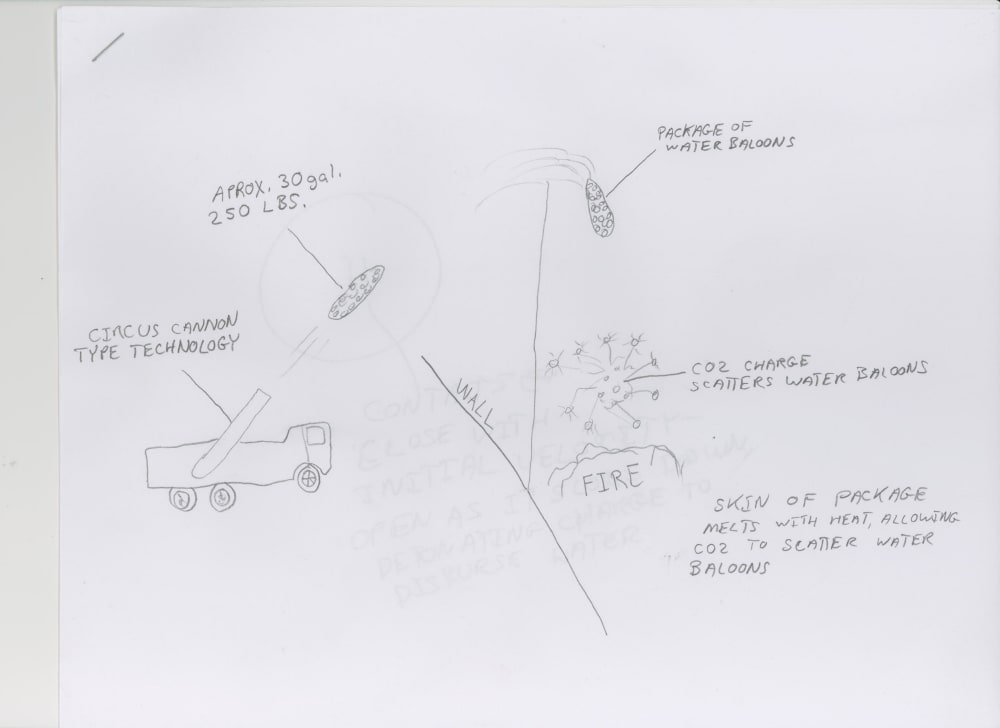Water Mortar Currently fire suppression systems use water at a flow rate of 750 to 1500 gpm. This causes alot of atomization, as a 1500 gpm flow is traveling at 120 mph, as it leaves a 1in nozzle. In a hot fire, most of this water is turned into steam, and goes into the atmosphere. The water mortar sends a package of water to the fire, that explodes directly at the source. The mortar "shell" consists of an outer shell(either heat deteriorating, or charge deteriorating), inner, smaller packages of water, and a charge (or pressurization of the entire package) to disburse the water balloons. Detonating the charge could be by heat sensitive skin, that ruptures at a given temperature (to be determined by the personnel, as to where, in the fire, they want it to explode). Detonation can also be prescribed by a triggering mechanism placed near the fire, with a triggerable mechanism in the package that explodes at the pre-determined location. Also, SPS can be used, so the package explodes at a pre-determined location. (This would be more reliable than a triggering mechanism, as a triggering mechanism would have to be placed near the fire, and be subject to the fire and other fire suppression activities). In the first configuration (heat rupturing skin), the package would have an internal charge of CO2, or other fire suppressing gas, to disburse the water balloons. In the second and third configurations, a small package of gas, would be placed inside the main package, with the electronics, and sensors pre-wired, to cause the balloon disbursement, at the pre-determined location. A fourth configuration, would be a pre-pressurized package, with a heat rupturing skin, and pre-determined heat rupturing skins on the water balloons, that release their water at the optimum location. This idea could be taken further, in different forms, to wildland firefighting, car firefighting, and small house firefighting. (The main body of information is aimed at warehouse, or large structure firefighting). In wildland firefighting, a helicopter load, which now consists of a bucket of water, could be turned into a bucket of water balloons, that release their water by heat sensitive skin, or just hold their water on the way down, reducing atomization, till the get to the fire. Tanker planes could now hold a bomb (water bomb), with any of the afore-mentioned detonating methods, to get the water closer to the fire, while remaining at a safer distance. Car firefighting could be with a low pressure machine gun type device, that shoots foam soaked sponges inside the car, to be banked off different parts of the car, to go the source of the fire. Small house firefighting could be with a variation of the car firefighting device, aimable in a horizontal (for window aiming), or vertical aiming (firefighter cut hole in the roof). The water packages could consist of a smaller mortar "shell" of the afore-mentioned type (triggerable, or pre-pressurized), single water balloons with heat rupturing skins, or foam soaked sponges.
Like this entry?
-
About the Entrant
- Name:Ried S. Hurtig
- Type of entry:individual
- Patent status:none

